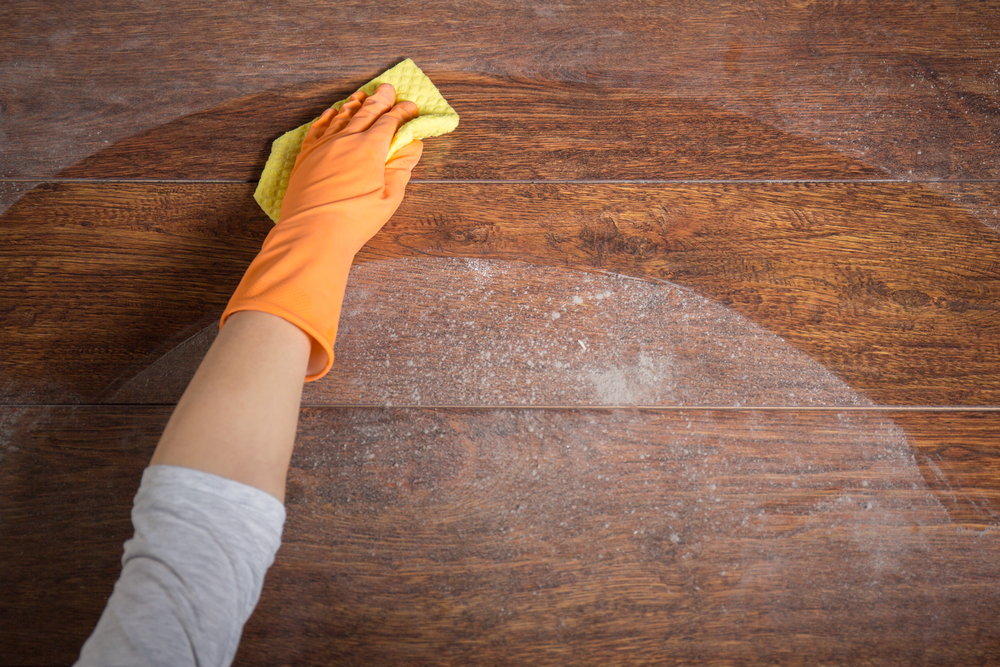
August 7, 2023
What is Dust and Where Does it Come From?
Cleaning a house would be more satisfactory if there wasn’t any dust. It can ruin your whole cleaning efforts overnight, covering everything in your home with something… you don’t even know what, but it looks horrible for sure. Except for ruining the aesthetics, the dust was found guilty of causing allergies, worsening asthma, and other health issues. But what is dust itself? Let’s break it down into components, see how it impacts your health, and finally, how we can bring the dust issue under control, especially here in New York City.
What is Dust?
Even though most people have no idea what dust is, they assume it is not homogenous, and that’s true. Dust is a mix of dry and loose particles, both indoor and outdoor, such as dead skin cells, pet fur, fabric fibers from clothing, carpets, and upholstery, dry paper particles from books, as well as pollen, soil, dust mites, and other dead insects decomposed.
Additionally, scientists found that, depending on some factors, dust can also contain mold, bacteria, viruses, microplastic from packaging and clothing, smoke, soot, traces of metals, radioactive elements, and chemicals (phthalates and plasticizers).
How Does Dust Get in Your Home?
Scientists have found that one-third of dust didn’t get in your home from anywhere. It actually originates at your home. What creates it?
- Dead skin
It is normal for human and even animal skin to renew by flaking off its outer layer, consisting of dead skin cells. Most of them go down the drain when we take a shower. However, a small amount of it gets on clothes and bedding and, eventually, travels into the air to become a regular component of dust.
- Dust mites
These tiny insects invisible to the unaimed eye love the company of humans and their dry skin flakes, which is food for them. Every house is populated by dust mites that thrive on dusty fabrics carrying dead skin flakes (bedding, curtains, etc.).
- Pet fur and dander
If you have a dog or a cat, their dead skin flakes (dander) and fur will contribute to the amount of dust in your house. However, even if you do not have pets, dander and fur can get in your dwelling from the outside being carried in on footwear.
- Dry food particles
All overlooked food crumbs that weren’t vacuumed and swept up immediately eventually dry out and become a component of your home dust.
Outdoor Sources of Dust
Two-thirds of dust get in your home from outside either with the air stream (through windows, doors, vents, and literally any smallest cracks) or being carried in on our clothes and footwear. In summer, the dust issue worsens because we keep windows open and spend more time outside. So what makes those two-thirds of dust?
- Pollen
- Soil
- Particulates from soot, smoke (including that from wildfire), mines, and other industries
- Car exhausts
- Organic matter (incl. feces)
The amount of dust is individual to every home because it depends on many factors such as location, season, cooking, cleaning, or smoking habits, the number of people inhabiting a particular house, and even the house’s age.
Common Places Dust Builds Up in Your Home
Dust likes to settle on horizontal surfaces such as windowsills, tables, bookshelves, and, of course, floors. Dust accumulation in these places isn’t usually a huge problem since you see it well and can address it when you clean your house. However, there are lots of less visible and discreet places around your home where dust can hide from you for months unless you practice deep cleaning at least once a season. These places are:
- Blades of ceiling fans
- Electronics (TV or PC screens, laptops, game consoles, etc.)
- Blinds and window treatments
- Tops of kitchen cabinets and closets
- Head jambs of doors and tops of door edges
- Baseboards
- Upholstery and carpets
Health Risks of Dust in Your Home
Not all dust is harmful and not for all people. The toxic effect of dust highly depends on the exposure time and dust particle size.
Luckily, the human body has protective mechanisms that help it intercept large particles of dust and breathe them out. We have already mentioned that dust may contain small amounts of microplastic and extra fine particles of toxic chemicals, including flame retardants and poly-fluoroalkyl substances. After being inhaled, these fine particles easily get to the lungs and, from there, to the human blood. Silicosis and asbestos dust particles are the most as they can cause serious illnesses such as asbestosis, silicosis, mesothelioma, and even lung and digestive system cancers.
Dust mites that thrive in indoor dust are a common allergen that causes dust allergy, triggers asthma, and a skin condition called eczema. If you notice that you or your home mate suffer from sneezing, cough, congested, runny nose, itchy, red, or watery eyes right after dusting, it can be a dust mite allergy.
Some people unsusceptible to dust mites can still develop the same dust allergy symptoms in reaction to other dust components such as mold, pollen, pet fur, or cockroaches. Those suffering from dust allergy-triggered asthma can develop even more serious symptoms, such as constant wheezing, tightness in the chest, coughing, and sudden breathlessness.
If dust allergy is the case for you, curbing your home dust becomes a matter of survival.
How to Keep Dust Under Control in Your Home
It is impossible to get rid of home dust completely. Even if you keep your windows and doors tightly shut, the outdoor dust will eventually get inside through the tiniest cracks. Therefore, there is no point in avoiding dust completely. It is a part of our lives, though it is the part that ought to be under control. Here is what you should do to minimize dust-associated health risks and improve your indoor air quality and your overall interior aesthetics (because no one finds dust any appealing):
1. Incorporate proper cleaning techniques
Using adequate cleaning methods helps, if not eliminates, at least tame the dust issue and prevent the negative health effects. Here is what we learned about dust from our excessive home cleaning experience:
- Using a damp microfiber cloth or a damp mop helps trap dust more effectively than if you used a broom or a feather duster.
- When dusting, do it from top to bottom, not vice versa, because dust always settles down. So, first dust, then vacuum.
- Use a vacuum cleaner with a HEPA filter. Such a filter is effective when it comes to catching extra fine dust particles, which are the most dangerous.
- Do the deep cleaning once in a season. Regular cleaning can be insufficient in solving the dust issue because it focuses only on major surfaces and usually overlooks the nooks and crannies where dust hides. A professional top-to-bottom deep cleaning is a comprehensive service that addresses all possible sources of dust, including furniture and carpeting.
2. Trap dust at the front door
Taking off shoes when you come in and using a doormat helps isolate the dust and prevent it from spreading all across your house. If your kids or pets come back from the walk all covered in mud, take the dirty clothes off at the entry and use wet towels to wipe down your dog’s or cat’s paws.
3. Change bedding every week
To reduce the population of dust mites, take away their food source. Ensure you change your bed linen once every week to keep your bedding as free of flaked-off dead skin as possible.
4. Groom your pets regularly
Keeping your pets tidy helps reduce the total amount of dust (less pet fur or hair) and the population of dust mites (less pet dander).
5. Reduce chemicals
While you not always can influence the natural mechanisms of dust formation, you still can influence what kind of chemicals enter your home and get a chance to end up in dust. Keep the consumption of waterproofers, pesticides (especially in spray forms), and plastic goods low, and avoid overusing antibacterial products. Most surfaces can be effectively cleaned with water and liquid soap.
6. Regularly change air filters
Filters in your cooling and heating systems can accumulate tons of dust with all their diverse components. Replacing air filters regularly and choosing the ones with maximum filtering capacity can substantially improve indoor air quality by capturing dust mites and unwanted germs and fumes.
Dust can be either an annoying nuisance or a serious trouble capable of upending your life and making it unbearable. Luckily, modern air quality control devices and simple, though effective cleaning techniques can bring the dust issue under control. Do not hesitate to order a deep cleaning service in NYC if your home needs a fast and effective clean reset.
